JN0-649 Online Practice Questions and Answers
Questions 4
Referring to the exhibit, a PIM-SM network is set up to enable communication between multicast devices.
Which two statements are true? (Choose two.)
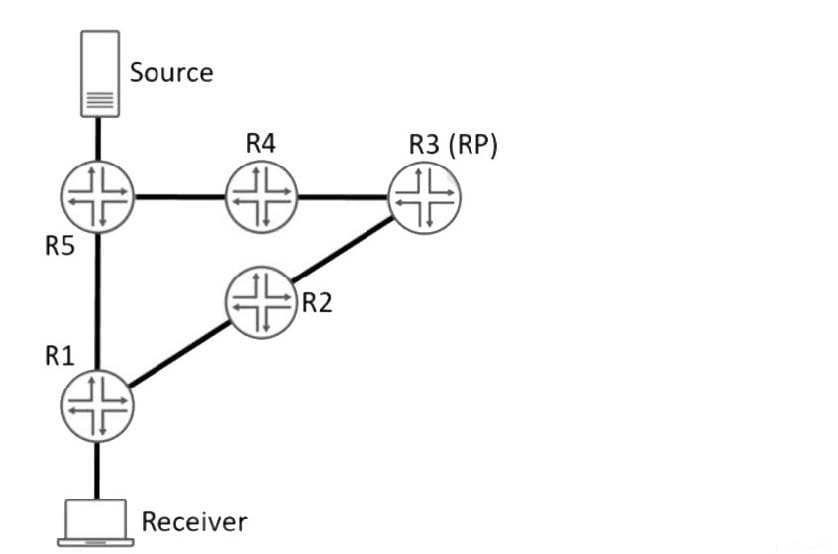
A. Before the formation of the rendezvous-point tree, a join message is sent from R1 to R3.
B. Before theformation of the rendezvous-point tree, an IGMP is sent from the Receiver to R1.
C. Before the formation of the rendezvous-point tree, an IGMP is sent from the Source to R5.
D. Before the formation of the rendezvous-point tree, a join message is sent from R1 to R5.
Questions 5
Remote branches connect to the corporate WAN through access switches. The access switches connect to access ports on the WAN distribution switch, as shown in the exhibit. L2PT has previously been configuredon the tunnel Layer 2 traffic across the WAN. You decide to move the L2PT tunnel endpoints to the access switches. When you apply the L2PT configuration to the access switches, the ports that connect the access switches to the distribution switch shut down.
Which action would solve this problem?
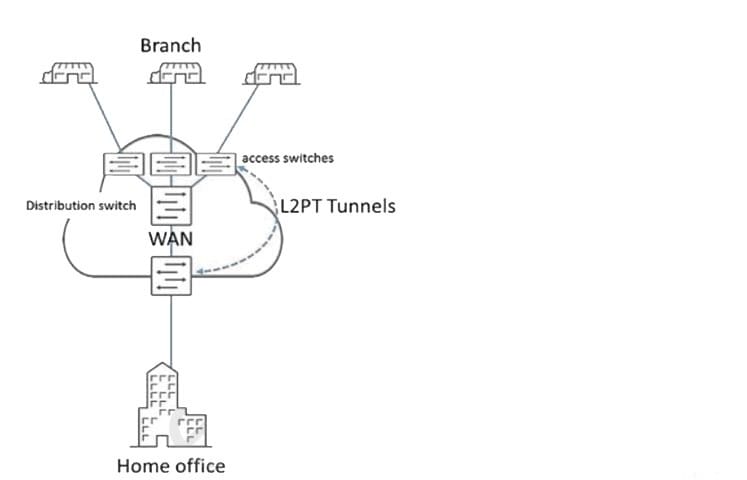
A. Configure the links between the access switches and the distribution switch as a trunk port.
B. Disable the BPDU block function on the access switches.
C. Disable the BPDU block function on thedistribution switch.
D. Configure a GRE tunnel to encapsulate the L2PT traffic across the WAN.
Questions 6
Referring to the exhibit, which statement is correct?

A. The route is learned from a multihop BGP session.
B. The route is learned from only one neighbor.
C. The route is learned from a multipath BGP session.
D. The route is learned from three different neighbors.
Questions 7
Referring to the exhibit, how will router E quickly learn that the remote MAC addresses are no longer reachable through the router attached to the failed link?
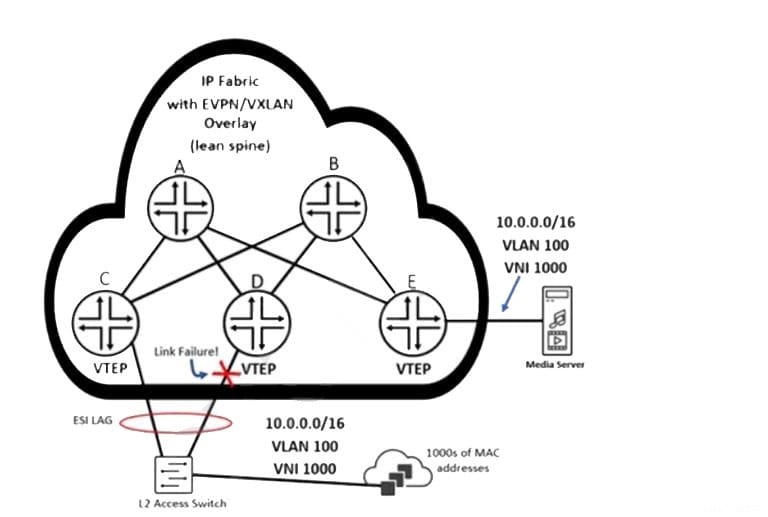
A. Router E receives Type 2 withdrawal messages from router D.
B. Router E receives Type 1 withdrawal messages from router D.
C. Router E receives Type 1 withdrawal messages from router C.
D. Router E receives Type 2 withdrawal messages from router C.
Questions 8
Which three statements are correct about EVPN route types? (Choose three.)
A. Type 3 routes carry replication information.
B. Type 2 routes carry endpoint MAC address information.
C. Type 2 routes carry endpoint IP address information.
D. Type 5 routes carry replication information.
E. Type 1 routes carry endpoint MAC address information.
Questions 9
You have scheduled maintenance operationsfor one of the devices in your OSPF network. Referring to the exhibit, which three statements are correct? (Choose three.)
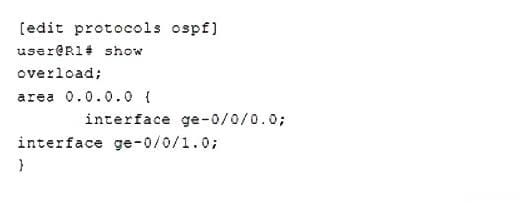
A. R1 does not participate in OSPF routing.
B. Any traffic destined for networks that terminate on R1 will still beforwarded to R1.
C. The metrics for all transit interfaces on R1 is set to the maximum value of 65,535.
D. R1 participates in OSPF routing but does not send or receive transit traffic.
E. R1 does not send or receive transit traffic during the maintenance window even if no alternative paths exist to the given destination.
Questions 10
Which two statements are correct about the deployment of EVPN-VXLAN on QFX Series devices? (Choose two.)
A. Type 1 routeadvertisements always have the single-active flag set to 1.
B. Junos OS supports underlay replication for BUM traffic forwarding.
C. Junos OS supports ingress replication for BUM traffic forwarding.
D. Type 1 route advertisements always have thesingle-active flag set to 0.
Questions 11
Referring to the outputs shown in the exhibit, which two statements are correct about the IS-IS adjacency? (Choose two.)
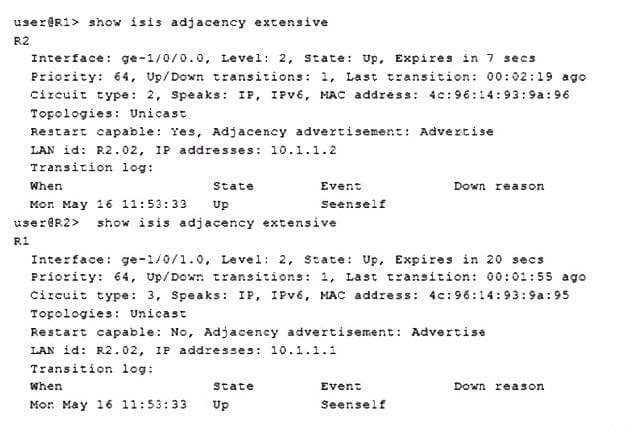
A. R1 is configured to participate in bothLevel 1 and Level 2.
B. R2 is configured to participate in both Level 1 and Level 2.
C. R1 is configured to participate in Level 2 only.
D. R2 is configured to participate in Level 2 only.
Questions 12
You are troubleshooting connectivity between an EVPN spine switch configured as a route reflector and a leaf node with an IP address of 10.30.100.6. Referring to the exhibit, what is the problem?
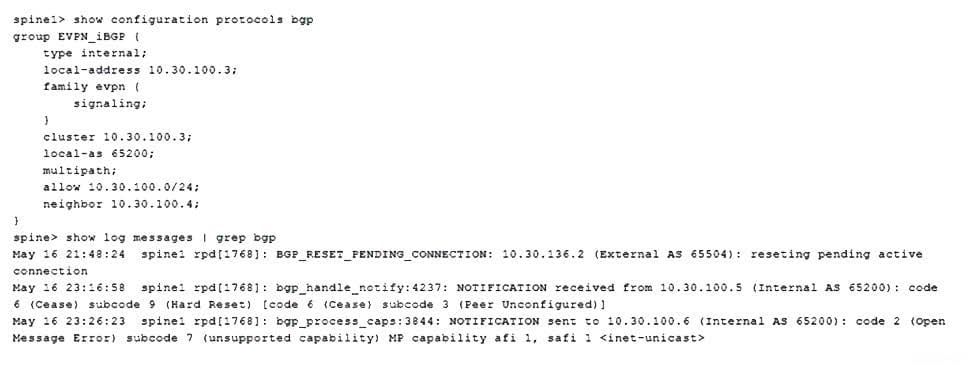
A. The neighbor 10.30.100.3 statement is missing from leaf1's configuration.
B. The spinenode is not configured for the family inet NLRI.
C. The neighbor 10.30.100.6 statement is missing from spine1's configuration.
D. The leaf node is not configured for the family evpn NLRI.
Questions 13
You are troubleshooting an EVPN-VXLAN IP fabric and observe the loop shown in the exhibit. Which two steps would you take to further troubleshoot this problem? (Choose two.)
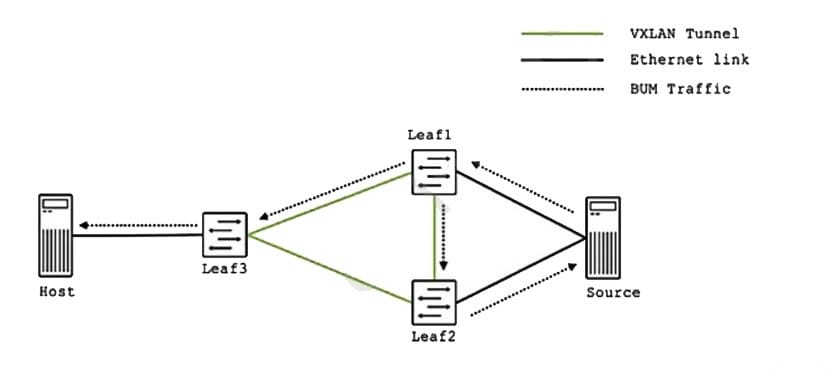
A. Verify that the same ESI is configured on the link from thehost and that it matches the source.
B. Issue the show route table bgp.evpn.0 command on Leaf2 and verify that Type 4 routes are present.
C. Issue the show route table bgp.evpn.0 command on Leaf2 and verify that Type 3 routes are present.
D. Verify thatthe same ESI is configured on the two links from the source.
